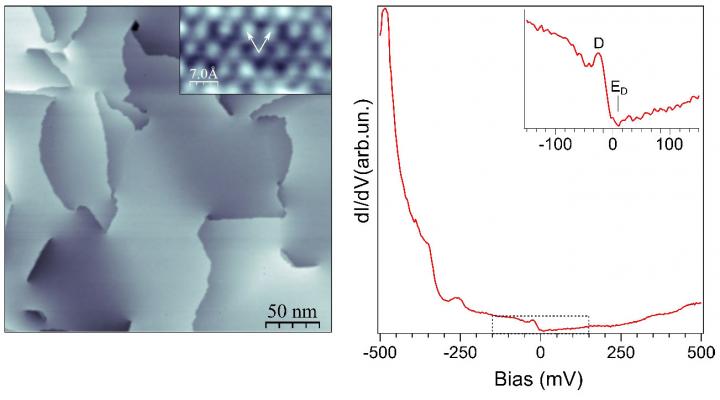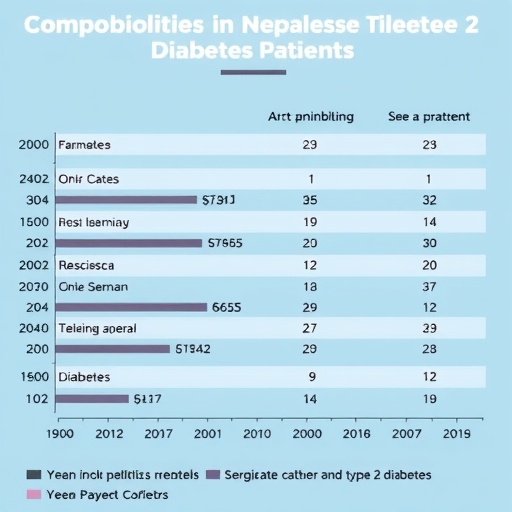Exchange, correlation effects crucial to electron speed and mobility

Credit: FLEET
An Australian-led study uses a scanning-tunnelling microscope ‘trick’ to map electronic structure in Na3Bi, seeking an answer to that material’s extremely high electron mobility.
In studying the topological Dirac semimetal, the team found that exchange and correlation effects are crucial to electron speed, and therefore mobility, and thus to the use of this exciting class of materials in future ultra-low energy electronics.
To date, little has been known about the band dispersion of Na3Bi in the conduction band (above the Fermi level), though there have been tantalizing hints that the actual velocity of the electrons is much larger than theoretical predictions.
“We grew thin films of Na3Bi and investigated their band structure via quasiparticle interference,” says lead author Dr Iolanda di Bernardo.
“Our calculations revealed that to understand the extremely high experimental velocities of the charge carriers, particularly in the conduction band, exchange and correlation effects are crucial”.
Clever tricks and surprises:
Topological Dirac semimetals can be considered as the 3D counterparts of graphene: around the Fermi level (where the conduction electrons ‘usually’ sit) they exhibit the same linear band dispersion that graphene does, which means that their electrons are virtually massless.
This, naturally, translates into extremely high conductivity, and in this case, occurs in all three directions in space.
This linear band dispersion was predicted for Na3Bi, but a proper mapping of the conduction band for this material was still missing.
Measuring the band structure of materials above the Fermi level is, in fact, not a trivial task – mainly because electrons are not typically occupying these states.
One of the few ways this can be accomplished is by using a trick based on scanning tunnelling spectroscopy:
“We acquire ‘mappings’ of the quantum tunnelling current between the tip and the sample at different biases,” explains Iolanda.
The derivatives of these mappings show very typical patterns, originating from the scattering of the electrons with the disorder in the sample.
This scattering process mixes electrons that are on the same constant-energy contours in reciprocal space, which is made visible by taking a Fourier transform of the mappings.
“In our case, this yielded ‘circles’, corresponding to cuts along a Dirac-cone like dispersion” (see figure).
This analysis technique allowed the team to reconstruct the (linear) band dispersion in the material and extract the charge carriers’ velocities, both in the valence and the conduction bands.
But when these measured band dispersions were compared with theoretical predictions, there was a problem: the measured velocities for the lowest-lying conduction and valence bands were significantly higher than theoretical predictions.
However, the team found one way to significantly improve agreement between measurement and theory:
“We used increasingly complicated models to describe our system, and discovered that as we improved the treatment of the exchange and correlation potential in the model (going from PBE to GW methods), we could get closer to the experimental values – even though we still observed some discrepancies,” explains Iolanda.
While the origin of these unexpectedly-strong interactions is still unclear, the new study demonstrates that exchange-correlation effects are likely at the base of the high velocity of electrons in Na3Bi.
Understanding the ultra-high mobilities of carriers in topological Dirac semimetals is a step toward the successful implementation of these materials in devices for low-energy electronics.
The study
Importance of interactions for the band structure of the topological Dirac semimetal Na3Bi, was published in July 2020 in Physical Review B (DOI: 10.1103/physrevb.102.045124).
This work, a successful collaboration between FLEET, the Singapore University of Technology and Design and Soochow University was supported by the ARC (Centre of Excellence and DECRA programs) and the Singapore MOE AcRF Tier 2. The computational work was performed on resources of the National Supercomputing Centre (Singapore) and the Texas Advanced Computing Center.
Within FLEET
The Centre for Future Low-Energy Electronics Technologies (FLEET) is a collaboration of over two hundred researchers, seeking to develop ultra-low energy electronics to face the challenge of energy use in computation, which already consumes 8% of global electricity, and is doubling each decade.
More information
- Contact Research Fellow Dr Iolanda di Bernardo (Monash University) [email protected]
- Follow FLEET at @FLEETCentre
- Watch Future solutions to computation energy use
Media Contact
Errol Hunt
[email protected]
Original Source
http://www.
Related Journal Article
http://dx.




